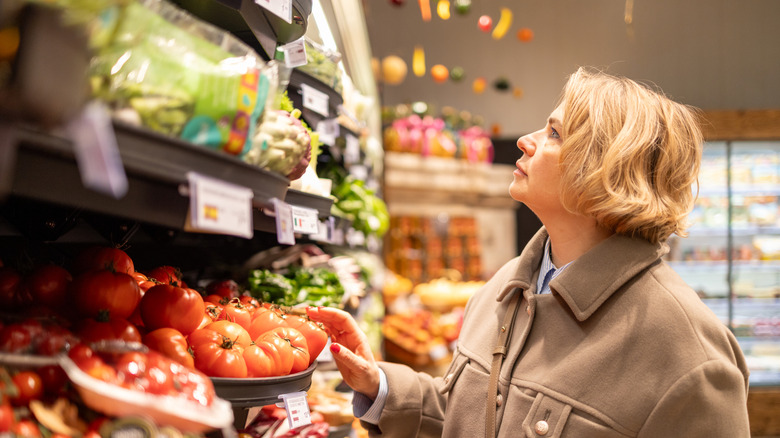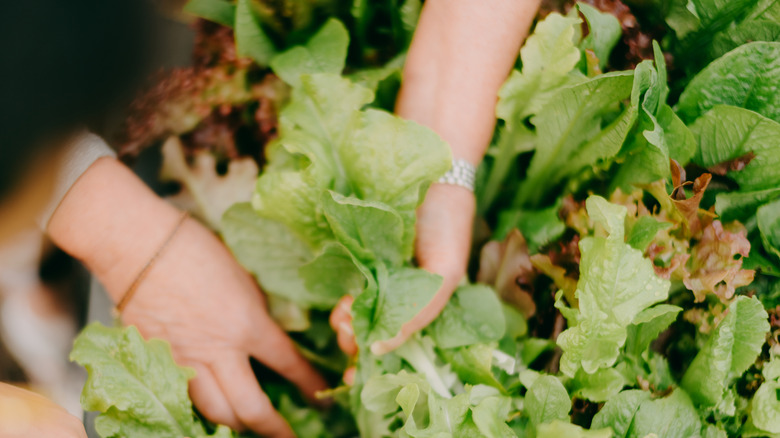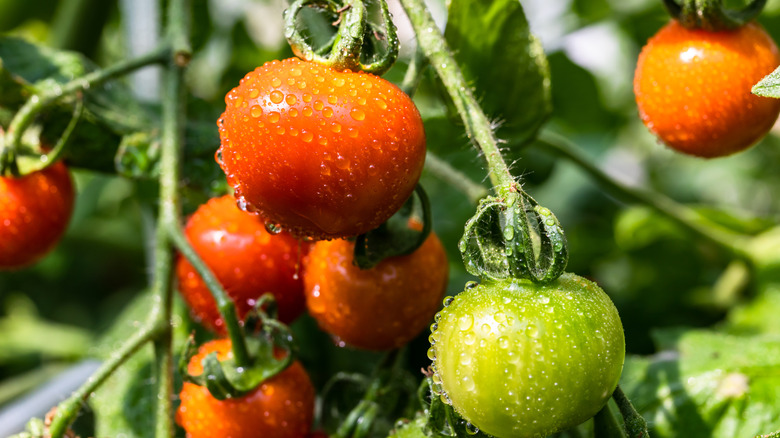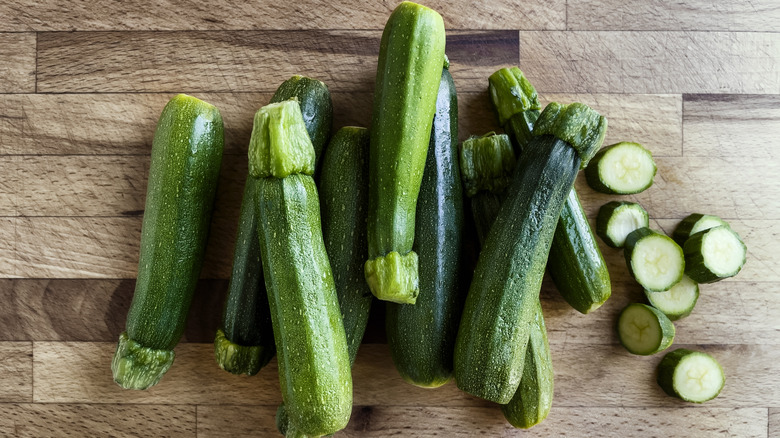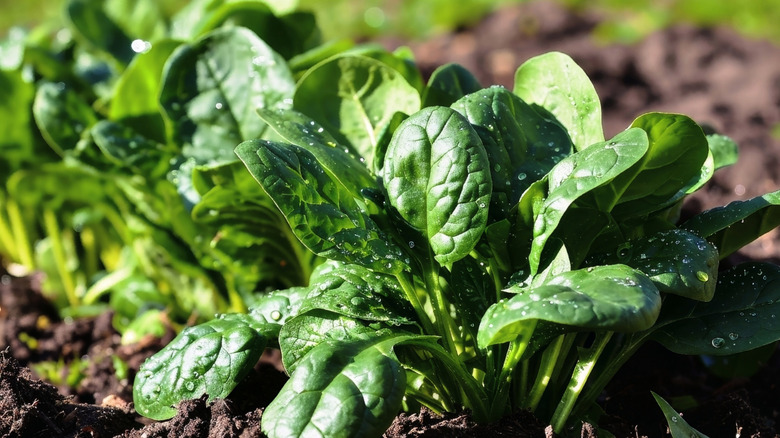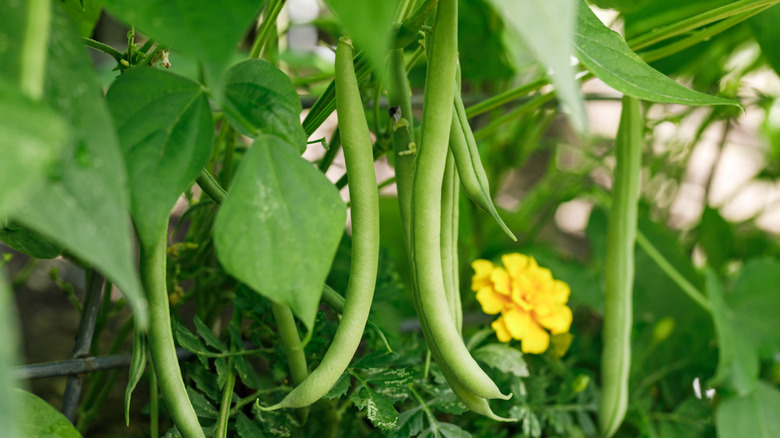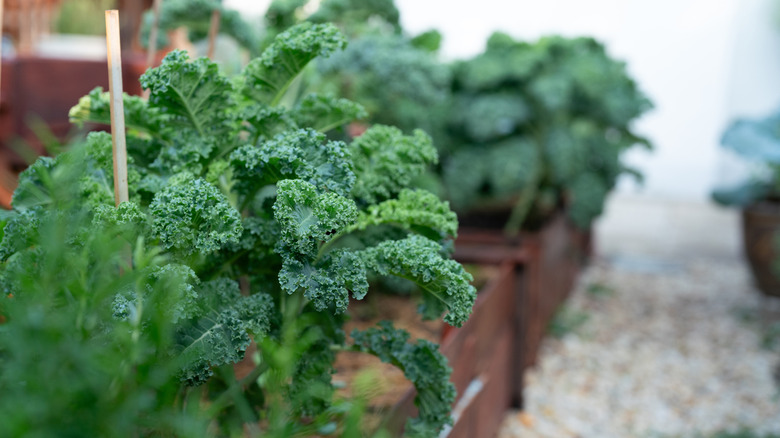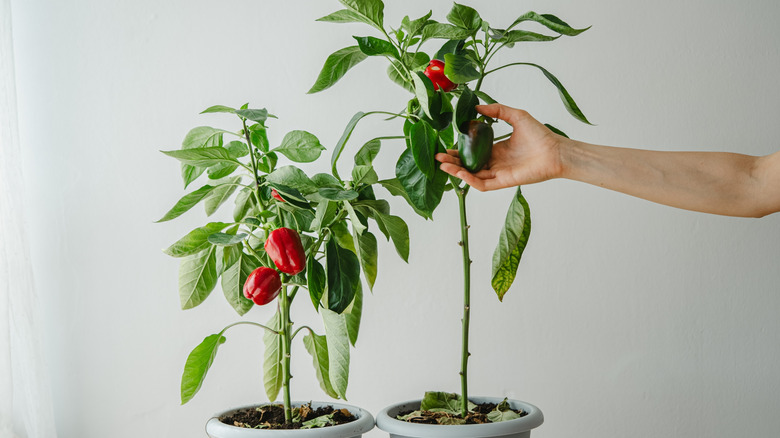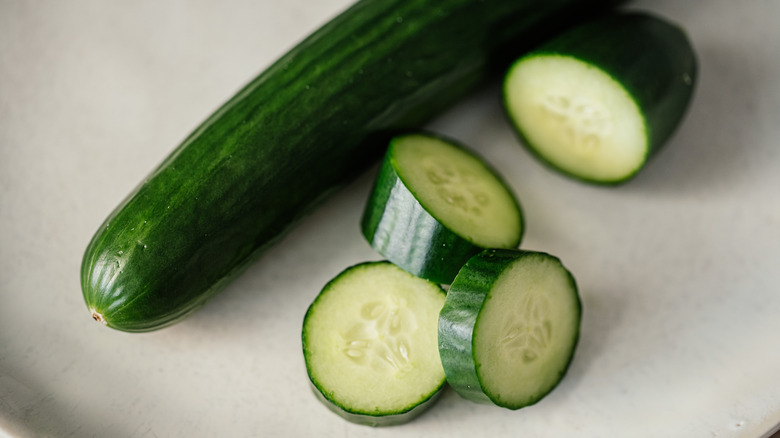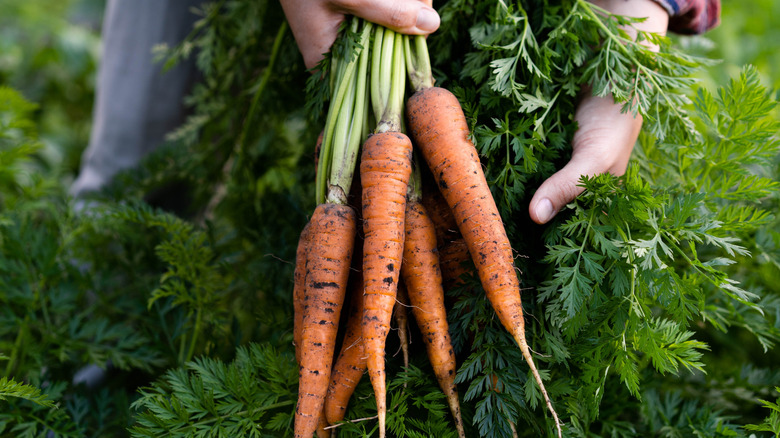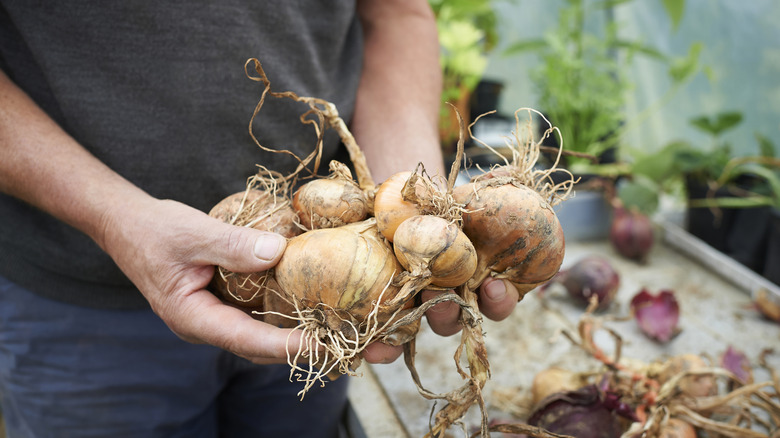Maximize Grocery Savings With 10 Vegetables That Are Cheaper To Grow Than Buy
We may receive a commission on purchases made from links.
If you want to save big on your grocery store bill, why not start in the backyard? Let's face it, inflation is hitting groceries hard, and feeding an entire family a healthy and nutritious meal without breaking the bank can feel nearly impossible these days. But what if we told you that your favorite salad, stir-fry, or smoothie could cost you a lot less if you started to grow some vegetables in your garden?
Growing your own food sounds intimidating, but it's not as hard as it sounds. Some vegetables are perfect for beginner gardeners, like lettuce or tomatoes. Some of these vegetables are especially cost-efficient because they regrow after harvest, like spinach, and some can produce an incredible number of fruits per plant, like cucumbers. Some seeds can be kept for up to three years, so you have plenty of time to perfect your gardening game. With a bit of patience, you'll be on your way to eating fresh, homegrown vegetables instead of buying them from the store.
One thing to take into account when considering the cost of growing vegetables is infrastructure. If you're brand new to gardening and don't have any containers or trellises, buying brand-new material could be an upfront cost that tips the budget scale on the heavier side. For ambitious and budget-conscious gardeners, there are plenty of types of DIY trellises you can make for your vegetable garden instead of buying them new. The same is true for containers.
Lettuce
Lettuce is a crowd favorite, and it's an absolute slam-dunk when it comes to gardening. It grows quickly, doesn't take much space, and you can harvest several times from the same plant. You can grow these in the garden or even in small containers at home. In the store, you could spend over $4 for one bag of lettuce, which is more than you'd spend on seeds to grow several plants that will give you multiple harvests each. Grow these to save big bucks on salads and burger fillings.
Tomatoes
Tomatoes can be pricey, whereas they're one of the easiest crops to grow. On top of that, freshly picked tomatoes tend to taste a lot better than store-bought ones, so it really is a win-win. You can plant tomatoes in the ground or in containers, but they do require full sun and a supporting structure like trellises or stakes. You can buy a live heirloom tomato plant for less than $5, which will give you plenty of fruit to harvest.
Zucchini
Zucchini is delicious, and it's great for your health. This vegetable is packed with vitamins and fiber, and has very few calories. However, a single zucchini easily costs more than $1. That sounds low, but growing them yourself could bring that number way down. On average, one zucchini plant can give you up to 10 pounds of vegetables, and they only take one to two months to grow after being planted. Considering seeds retail for less than $3, it's worth the investment.
Spinach
Store-bought spinach can cost at least $2, and more for organic options. Considering spinach's tendency to shrink as soon as you cook it, it can quickly become expensive to introduce it into your daily diet. In addition, spinach spoils quickly, and it's usually packaged in tons of plastic. Grow your own to have a steady, eco-friendly, and affordable supply of nutrient-rich greens for salads, meals, or smoothies. Spinach grows within 50 days of being planted and continuously regrows after being harvested all season long. The math adds up, considering you can order 500 RDR Spinach Seeds for just $4.99.
Green beans
Harvesting your own green beans is a wonderful investment because each plant produces weeks and weeks' worth of fresh beans. Fresh green beans are usually sold in small bags that aren't cost-effective, especially if you're looking for high-quality organic ones. But green beans are easy to grow, and they're pretty low maintenance. Some varieties require a trellis, while others can grow in a bush, which makes the upfront investment needed for equipment even lower. Just spend a couple of dollars on a bag of seeds for weeks of green beans.
Kale
Kale is a cold-hardy plant that can feed you through the fall. Like lettuce and spinach, this is a crop that will regrow after being harvested, as long as it's done right. You can cut individual kale leaves when they reach maturity, which pretty much means you have a self-service, continuous supply of greens for meals and smoothies. This also allows you to skip the plastic packaging that comes with each purchase of store-bought kale. Save your health, your money, and the planet by planting kale in your garden.
Bell pepper
Bell peppers can cost a small fortune, usually retailing at nearly a dollar or more each. If you have a garden and aren't growing your own bell pepper plants yet, you should seriously consider it. You can buy 100 RDR Bell Pepper Seeds for just $4.99. Considering each plant can give you up to 10 bell peppers per season, you could end up with bell peppers that cost a fraction of what you're paying for them at the store.
Cucumbers
Cucumbers are another one of those easy crops that you should consider adding to your garden rotation. Each individual cucumber costs up to a dollar at the grocery store, and you're likely to go through a handful each week if you're cooking for an entire family. What if we told you that each cucumber plant can produce nearly 30 individual fruits each season? The best part is that you don't even need a big garden to grow cucumbers – you can do it in pots and containers. You'll have so many cucumbers, you might even start to gift them to everyone you know.
Carrots
With carrots, a tiny seed can go a very long way. Homegrown carrots are full of flavor, they're incredibly nutritious, and they can grow in containers as well as directly in the ground. They don't take over your garden, and they're reliable to harvest from May to November. You can get 800 Seed Needs Carrot Seeds for $3.99, and you'll be sure to get a (vitamin-filled) bang for your buck. In addition, carrots and lettuce make for wonderful companion plants that grow perfectly together in the garden.
Onions
Finally, consider growing onions in your backyard. These are one of the easiest crops to grow, especially in zones 5 and 6 in the United States. For the price of just five individual fresh onions from the grocery store, you can buy an entire packet of seeds. These are a great budget-friendly option because they can grow directly into the ground, not requiring any type of costly installations like trellises or containers. Once you've mastered one type of onion, you can also branch out to other members of the allium family, like shallots, spring onions, or garlic.
